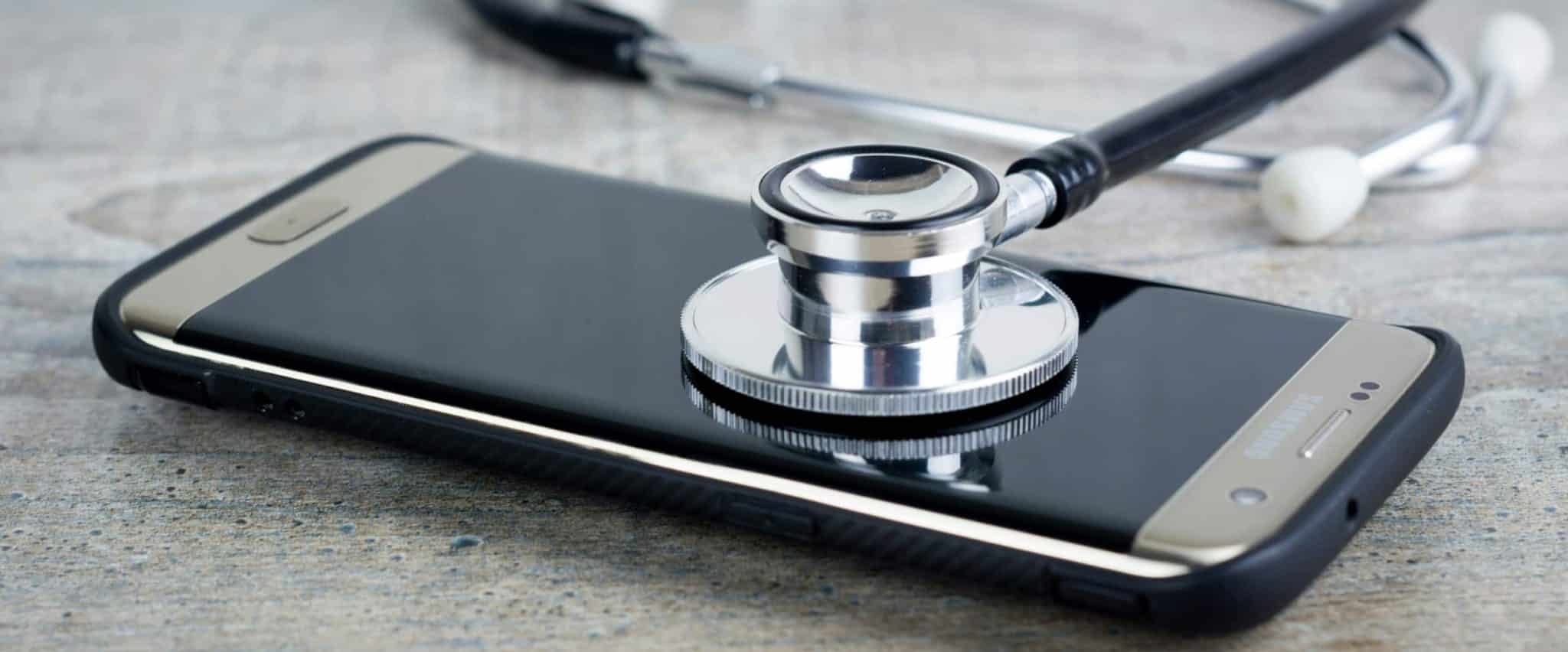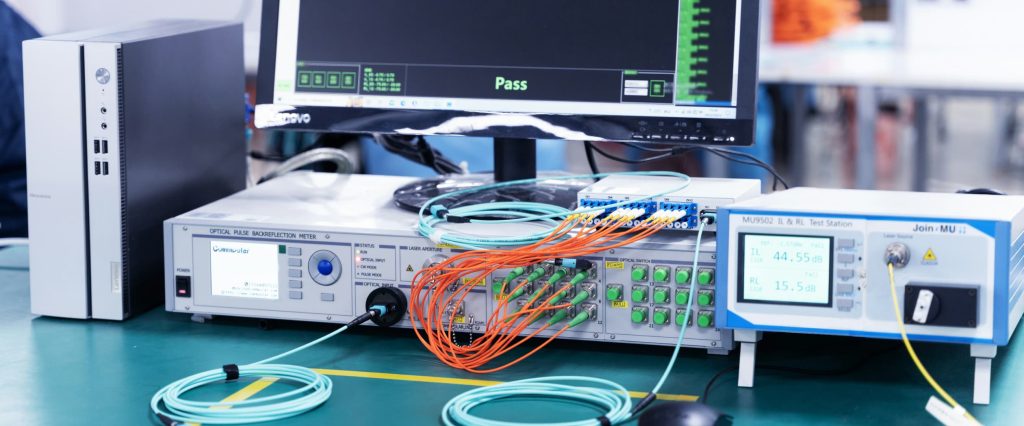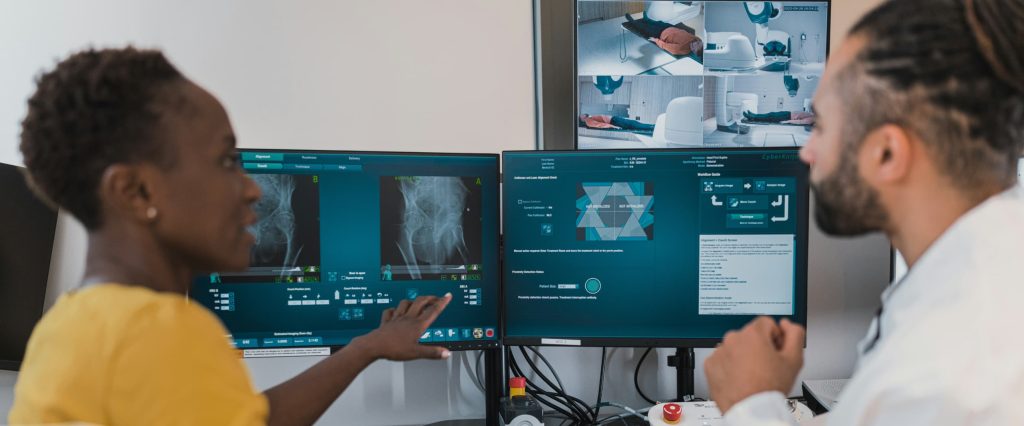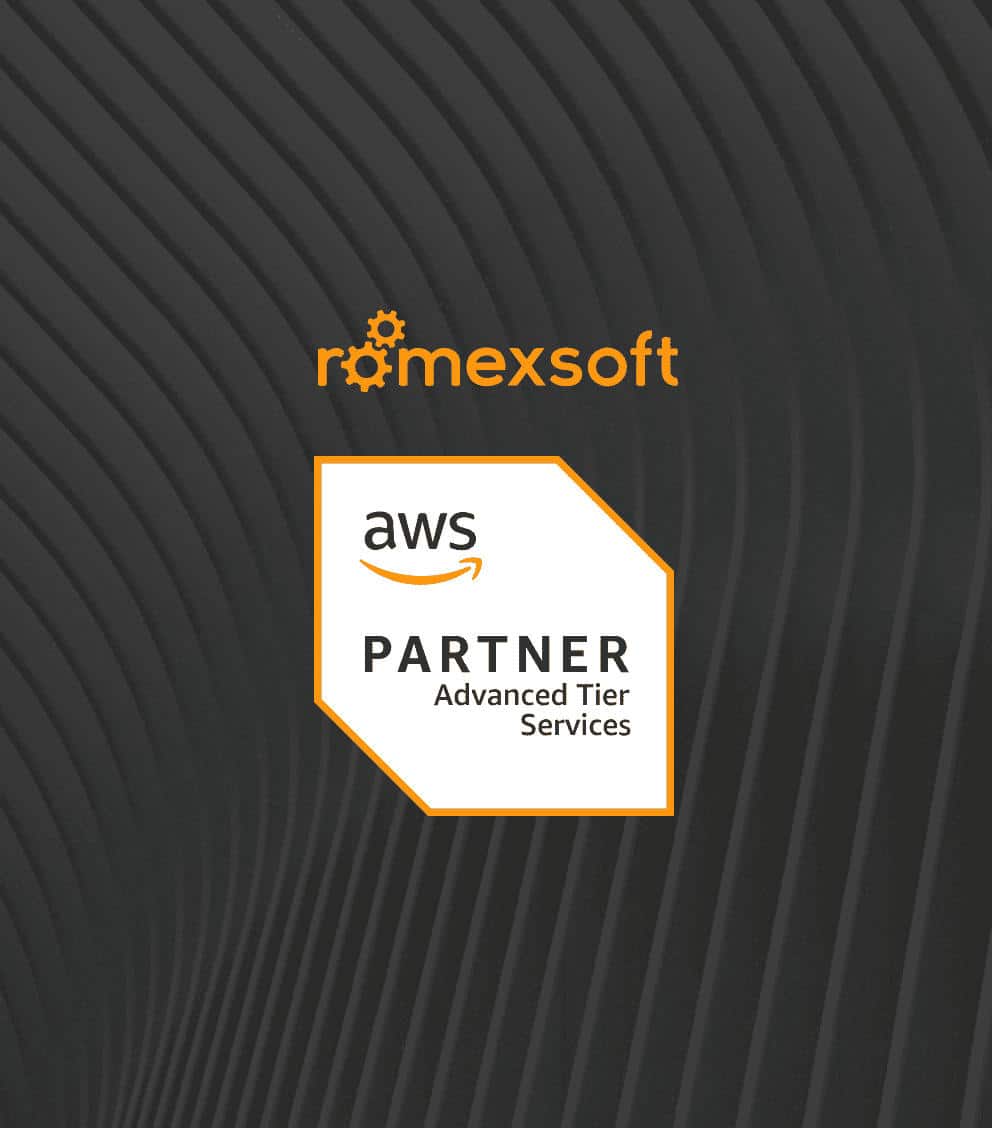Key Features and Best Practices for Healthcare Mobile App Development
The global mobile healthcare application market is growing fast. Understanding what kind of applications succeed in this lucrative field and how to develop one is key if you plan to invest in this type of product.
This article provides a detailed analysis of mobile healthcare application types and a step-by-step guide for developing one, augmented with a list of best practices that can help ensure the success of your product.
The blog discusses:
- what healthcare mobile apps are
- benefits of using such applications
- types of mHealth solutions
- must-have features for mobile health apps
- steps to build a healthcare app
- best practices for app development

Table of Contents
The mobile healthcare applications market is currently valued at about $114 billion. It’s projected to keep expanding at a CAGR of 45% from 2025 to 2030 and reach trillions in value by 2034. The areas with the strongest regional growth right now are Asia Pacific, Europe, and North America. In those places, the popularity of these solutions is strongly augmented by the smartphone penetration rate as well as government initiatives that sponsor these projects.
Moreover, AI and ML capabilities greatly expand the limits of what mobile healthcare apps can do.
Table of Contents
What Is Healthcare Mobile App Development
Healthcare mobile app development is the process of designing, building, and maintaining mHealth (mobile health) solutions. This term usually refers to healthcare applications that are used for managing clinical, administrative, or wellness-related activities. They can be used by patients directly as well as healthcare providers and organizations.
These solutions are extremely versatile and can be used for multiple tasks, from personal health tracking to hospital inventory management. Some of the common features healthcare apps have today are:
- Appointment scheduling
- Remote consultations
- EHR (Electronic Health Records) access
- Prescription management
- Fitness tracking
- AI-powered diagnostics
Benefits of Healthcare Mobile App Development
Healthcare mobile apps benefit both patients and healthcare providers because they help optimize multiple processes. Ultimately, all of them aim to facilitate delivery and improve the quality of care.
Benefits for Healthcare Providers
Healthcare providers mostly use mobile software to manage administrative tasks and deliver care remotely. The main benefits healthcare organizations and providers get from this technology include:
- Streamlined Operations
Healthcare apps can reduce paperwork and speed up document exchange, scheduling, billing, and patient data management. This optimization is crucial for reducing the risk of human error. - Efficient Patient Data Management
These apps can be used to manage patient data, electronic health records, diagnostic results, and prescription information. This not only speeds up healthcare delivery but also helps coordinate between multiple patients, healthcare providers, and medical specialists. - Real-Time Health Monitoring
One of the biggest advantages of mobile healthcare apps is that they enable effective, real-time remote patient monitoring. This type of solution can be essential for detecting complications early and improving diagnostic accuracy. - Improved Remote Patient Care
Remote patients can easily access healthcare using mobile apps. This is crucial for rural areas. For example, in the US, about 20% of the population (about 66 million people) live in rural communities, and about half of them are more than an hour away from the closest hospital. - Improved Clinical Outcomes
Efficient data management, access to healthcare regardless of location, timely diagnostics, and personalized alerts and care contribute to improving overall treatment results. These solutions also help develop more effective personalized treatment plans.
Benefits for Patients and General Users
There is a wide range of healthcare mobile apps designed for patients and even general users. They can use these solutions to monitor their health, find providers, and improve their access to care. Major benefits mHealth apps offer to users include, but aren’t limited to:
- Better Access to Personalized Care
Most importantly, mobile healthcare apps make care more accessible to people from various situations. - Early Detection and Prevention
Health monitoring apps can help identify issues early, and AI-powered symptom-checker solutions, like Ada or K Health, let people understand if they should contact their doctor. - Convenience and Better Communication
Patients can use these apps to book appointments, schedule tests, and communicate with doctors without actually going to the healthcare facility. - Self-Management and Proactive Treatment
Using mobile healthcare apps allows patients suffering from chronic conditions to take a more active role in their treatment and improve their quality of life.
Types of Healthcare Mobile Apps
MHealth applications are extremely versatile and can be applied in any scenario, from administrative management to diagnostics. They can be classified into several types based on whether they are designed to be used by healthcare providers and organizations or by patients personally.
Apps for Hospitals and Medical Professionals
The purpose of these solutions is to help hospitals, healthcare providers, and organizations offer their services more efficiently and enhance interprofessional collaboration. These apps often must be HIPAA-compliant and adhere to multiple other legal regulations regarding patient data protection.
EHR Systems
Mobile EHR apps, like MyChart by Epic Systems or Allscripts FollowMyHealth, integrate with EHR databases. Therefore, they allow clinicians instant access to all relevant information, including patients’ medical histories, test results, treatment plans, allergies, and clinical notes.
These apps help improve clinical efficiency and documentation accuracy. Their main areas of application include:
- Acute care
- Outpatient clinics
- Patient transitions between healthcare facilities
Clinical Support Solutions
Clinical support apps offer various types of assistance to healthcare providers. For example, Epocrates by athenahealth provides access to a comprehensive drug database, pill identifier, and medical calculators. UpToDate by Wolters Kluwer offers evidence-based clinical summaries, diagnostic pathways, and treatment recommendations.
The purpose of these apps is to help clinicians validate treatment plans and offer the best medication prescriptions. They are most beneficial when used in:
- Emergency rooms
- Specialized medical consultations
- Rural clinics with limited specialist doctors
Telehealth Platforms
Telehealth platforms are mainly used for remote monitoring, consultations, and post-discharge follow-ups. Some examples include Teladoc Health, Amwell, MDLIVE, and CareSignal.
These apps connect patients with healthcare providers through video calls or chat and increase care accessibility. Main areas of use include:
- Chronic disease management
- Rural regions
- Outpatient care
Medical Collaboration Systems
Medical collaboration tools connect healthcare professionals and allow them to exchange knowledge and experience. Some examples include Doximity, Figure 1, and Siilo. These apps can be HIPAA-compliant to share encrypted patient data.
The main goal of using these systems is to enable clinicians to get second opinions and provide interdisciplinary coordination. They are most beneficial in:
- Managing complex cases
- Coordinating remote care teams
- Connecting multi-specialty providers
Hospital Workflow Software
Some mHealth apps are focused not on healthcare but on the administrative part of running this type of business. Some examples of such solutions are TeleTracking or LeanTaaS tools for hospital workforce management, queuing, capacity analytics, scheduling, etc. There are even some AI-powered solutions like Qventus, which allows for real-time patient flow prediction and discharge planning/scheduling.
These apps are useful in any healthcare facility, but they are indispensable in:
- Emergency care
- Large hospital networks
- During periods of peak admissions
Billing and Administrative Solutions
Billing and administrative apps facilitate payment and insurance claim processing, invoicing, co-pay collection, patient registration, etc. These are apps like Kareo Billing, DrChrono, and AdvancedMD.
Such solutions are essential for reducing billing errors, speeding up claims processing, and enhancing the revenue management cycle for healthcare providers. They are most effective in:
- Outpatient facilities
- Specialty clinics
- High-volume practices
Apps for Patients and General Users
These applications are designed for personal use and encourage people to take control of their health and develop positive habits to prevent health issues. They must be simple, interactive, and engaging to use, keeping people invested.
Patient Portals
Examples include My Health, MyChart, Healow, and MyMercy. These are platforms that allow patients to access their own health records, lab results, prescriptions, and clinical visit summaries. They encourage self-management and transparency, as well as reduce the number of calls to the clinic.
Such apps are most useful in:
- Ongoing coordination
- Post-visit engagement
- Chronic condition management
Appointment Booking Tools
These are great tools that facilitate scheduling and appointment management. They can also help patients find providers based on specialty, location, insurance availability, etc. Some examples of such apps are Zocdoc, Solv Health, and Healthgrades.
Appointment booking solutions are a great choice for:
- Outpatient clinics
- Diagnostic centers
- Elective procedure practices
Medication Trackers
Medication trackers are apps designed for patient convenience. They help track prescriptions, can offer dosage recommendations, and provide visual pill identification. They can be integrated with pharmacy systems to facilitate their operations and prescription management. Some of the popular medication tracker apps today are Medisafe, MyTherapy, and CareClinic.
These apps are most useful for:
- Elderly patients
- People with polypharmacy
- Patients managing long-term therapies
Wellness and Fitness Platforms
These apps are usually paired with wearable devices. They aim to encourage healthy living and personal wellness tracking. Some of the more popular examples today include Apple Health, Google Fit, Zepp, Fitbit, Flo, Samsung Health, and Oura.
These are great to use for:
- Personal wellness tracking
- Corporate health initiatives
- Social wellness programs
Chronic Care Tools
Designed specifically for patients who suffer from chronic health issues, like diabetes, hypertension, or asthma. These applications help them manage their conditions effectively and improve their quality of life. For example, there are BlueLoop and MySugr for diabetes management, AsthmaMD for asthma patients, and Omron Connect for heart health monitoring.
These tools should be used to:
- Reduce hospitalizations
- Improve the quality of care for chronic patients
- Improve outcomes for chronic conditions treatments
Mental Health Solutions
The main purposes of a well-designed mental health application are to make this type of care more accessible and reduce the stigma surrounding it. These apps allow for confidentiality, which is essential for many users. They can help connect people with certified therapists or simply offer some tips, exercises, mood tracking, or meditation guidance. Some of the top examples today include Calm, BetterHelp, Headspace, Talkspace, and Sanvello.
These applications can be a great help for:
- People struggling with anxiety
- Patients managing depression
- Those who are not yet open to seeking in-person help
MVP Features for Healthcare App Development
If you plan to build healthcare apps of any type, the first step is to create an MVP that you can use to raise funding and attract new investors. In order to maximize the value of every cent in your current budget, your MVP should include the following essential features:
Secure User Authentication
This feature is mandatory to ensure application compliance with HIPAA, GDPR, or any other relevant law. Secure authentication includes functionalities like two-factor authentication, password protection, and role-based access.
User Dashboard
The dashboard must be user-friendly and well-structured. This feature allows you to enhance app personalization, which means better user engagement and satisfaction. It must demonstrate visual and functional coherence of the application.
Patient Profile Management
An mHealth app that has a patient profile feature must provide key information, such as upcoming appointments, visit summaries, medication prescriptions, and patient history. It can be integrated with big EHR systems.
Appointment Scheduling
It’s a highly useful feature for health software as it enhances convenience for users on both sides (patients and healthcare providers). If you include this feature, make sure it has calendar integration, dynamic time slot management, and can be managed by both patients and staff.
Smart Notifications System
This can include email, SMS, or push notifications and in-app alerts. Allow users to set their format preferences. Remember that notifications must be configurable but also compliant with relevant privacy standards.
Telemedicine and Communication Tools
If you build healthcare apps with telemedicine or communication features, you’ll need to ensure reliable encryption to protect patient data. This feature must prioritize security, compliance, and low-latency performance.
Health Data Monitoring
Apps with this feature should allow for manual health metric input and could integrate with wearable devices and process data from them. You’ll need to focus on creating a flexible and reliable data pipeline when developing this type of app.
Medication Management
During medication management app development, include functionalities like reminders, dosage logs, and refill alerts. You should also consider integration with pharmacy networks and adding AI-powered features to facilitate drug search and identification.
Data Privacy and Security
Ensuring the security and privacy of healthcare data is crucial for compliance with HIPAA, GDPR, and other data security standards. To achieve this, use advanced data encryption in transit and at rest, secure session handling, audit trails, and access control policies.
Feedback Mechanism
Providing app users with a feedback mechanism can help you identify issues fast and select areas for improvement during maintenance and product upgrades. You can use an in-app chat to receive feedback or contact your users through email or messengers.
Steps in Developing a Healthcare App
When you build healthcare apps, the success of the endeavor will largely depend on two factors: the marketability of your idea and reliability of the healthcare software development services provider you choose. Therefore, the first step is to choose a trusted partner. The rest of the product development process goes as follows:
Healthcare Market and User Discovery
The goal at this stage is to ascertain that the app will be marketable. This includes understanding the current market landscape, identifying unmet needs, and defining the core value proposition.
This phase consists of:
- Market research
- Assessing existing solutions
- Competitor positioning analysis
- Identifying opportunities
- Defining the target audience
Ensuring Regulatory Readiness and Data Governance
As mHealth apps often deal with sensitive and protected information, they must comply with legal regulations pertinent to the niche and country, like HIPAA, PIPEDA, GDPR, etc.
To ensure regulatory compliance, healthcare app developers must:
- Understand how to ensure data handling, encryption, audit, access, and consent management under relevant legal frameworks.
- Develop a system architecture that adheres to security regulations.
- Build compliant operational policies from the start of the product development process.
Creating Patient-Centric Product Design
Healthcare tasks are largely complex, but it’s essential to ensure that the app design is user-friendly. It’s also imperative to make the app accessible to all user groups, including people with disabilities.
Crucial factors to consider during health application design include:
- Accessibility guidelines (e.g., WCAG)
- Intuitive interface for users with limited tech proficiency
- Clean screens to avoid overwhelming users
- Clear user flows to reduce the risk of errors
Healthcare Solution Development
During this stage of healthcare application development, you must create an MVP that includes all necessary core features. Bear in mind that all technical decisions you make at this point will impact future product development, growth, and scalability.
This phase consists of:
- Selecting the tech stack
- Back-end development that accounts for interoperability and data privacy
- Front-end development that ensures multiplatform responsiveness
- Third-party integrations
Clinical-Grade Quality Assurance
The testing of medical software must be exceedingly thorough to ensure not only the app’s functionality but also compliance and security.
This phase must include:
- Thorough usability testing
- Workflow validation across user roles, platforms, and devices
- Security audits
- Penetration testing
- Accessibility and UX testing
Launch Planning and Healthcare Market Entry
A successful launch strategy must account for marketing, targeted outreach, onboarding flows, and collecting early user feedback. You also need to consider post-launch activities and plan for them early, ensuring your app is scalable. These include attracting new users through app store optimization and promotion or integrations with larger platforms. Also, don’t forget about product maintenance, updates, and upgrades.
From the technical standpoint, this phase must include:
- Production deployment
- Backend scaling
- Creating legal documentation
Best Practices for Healthcare Mobile App Development
To ensure that your healthcare mobile app is a success, you need to use your budget with maximum efficiency. This entails choosing the right technology to achieve peak performance while including features that drive user engagement. The following best practices should guide you in making smart decisions during product development.
Build Secure, Compliant, and Resilient Infrastructure
You must implement a security-first approach during mobile healthcare application development and use end-to-end encryption, secure storage, access controls, and logging audits.
Use AWS or similar platforms that support HIPAA, GDPR, HITRUST, and other relevant security and legal frameworks compliance. AWS is particularly advantageous because it has tools like AWS Elastic Disaster Recovery to minimize downtime.
Use Cloud to Scale and Save Costs
Choosing cloud-native technologies will help you cut costs, streamline operations, and accelerate medical app development. You can use AWS-managed services to simplify infrastructure management, and your teams will focus on core functionality.
The pay-as-you-go pricing models offered by cloud platforms are extremely beneficial as well. This payment plan allows you to optimize your budget use and scale as needed.
Ensure Data Interoperability and Seamless Integration
Ensure your app can integrate seamlessly with healthcare systems by supporting interoperability standards, such as HL7 and FHIR. This will be easier to achieve if you use Amazon HealthLake, AWS Marketplace, and similar tools.
Your goal here is to unify data from various sources, including medical imaging, patient records, administrative systems, etc.
Handle Complex Health Data with Purpose-Built Solutions
Build healthcare apps that can process multiple data types, from genomics and omics to device-generated metrics and clinical notes.
To do this, leverage specialized AWS services, like HealthImaging, HealthOmics, and Comprehend Medical. They can interpret, transform, and analyze multimodal data quickly and accurately.
Drive Engagement Through Personalization and Value Delivery
Deliver timely and meaningful interactions to offer value to and keep people’s interest in the long term. Note that the UX and UI design must be coherent and intuitive to ensure users are equally comfortable with the app regardless of their age and tech prowess.
Offer personalized insights, reminders, care tips, etc., to keep people engaged. Also, use in-app feedback and user behavior analytics to improve user flows during updates.
Add AI and ML Smartly
Integrate AI and ML to automate workflows, extract clinical insights, and enhance personalized experiences. You can do this by using services similar to Amazon SageMaker for model development.
Consider using Amazon Bedrock or Comprehend Medical to enhance mHealth apps with language processing and generative AI.
Update Legacy Systems Step-by-Step
Don’t rush and implement a structured migration strategy using frameworks like the AWS Migration Acceleration Program. You can reduce overall risks and cut costs by migrating to the cloud and scaling as needed.
After migration, enhance your solution by integrating third-party tools that can complement its functionality while keeping the product cost-efficient overall.
Healthcare Mobile App Development Q&A
The cost of mobile medical app development can vary greatly depending on multiple factors, such as features, tech stack, platform choice, third-party integrations, and complexity. In general, the pricing scope to consider when you build healthcare apps goes like this:
$30,000 to $60,000 is a typical cost for basic apps that focus on one core feature, like appointment booking or medication reminders.
$50,000 to $100,000 is the range you should consider if you want to develop a mid-level app with features like telemedicine, EHR integration, or patient dashboards.
$150,000 to $450,000 or more is the price range of advanced medical software with multiple features, including AI/ML capabilities, real-time monitoring, etc.
Similar to cost, the duration of healthcare mobile app development will vary depending on the solution’s complexity and features. In general, it should take between 3 and 9 months. Advanced apps with multiple integrations could take longer to develop. You also shouldn’t forget that development doesn’t stop with the app’s launch. You also need to consider regular maintenance, post-launch support, and future updates. In addition, bear in mind that achieving full user adoption and profitability could take up to 18-36 months.
The best mix of technologies for mobile health software development should include a secure cloud infrastructure, cross-platform frameworks, and the latest DevOps practices. Here’s an example of a good tech stack for these solutions:
Back-end: AWS services like Lambda, Cognito, or API Gateway.
Front-end: React Native or Flutter.
CI/CD pipelines: AWS CodePipeline,
Security: Assorted AWS security tools that ensure HIPAA compliance, along with data protection.
QA: AWS Device Farm or CloudWatch.
In general, healthcare mobile apps do not require FDA approval. However, if you create an application that will be classified as a ‘medical device’, meaning it’s intended to treat, diagnose, or prevent medical conditions, it falls under FDA regulations.
You should review the FDA guidelines or consult with the agency directly in order to determine whether your app needs FDA approval.





